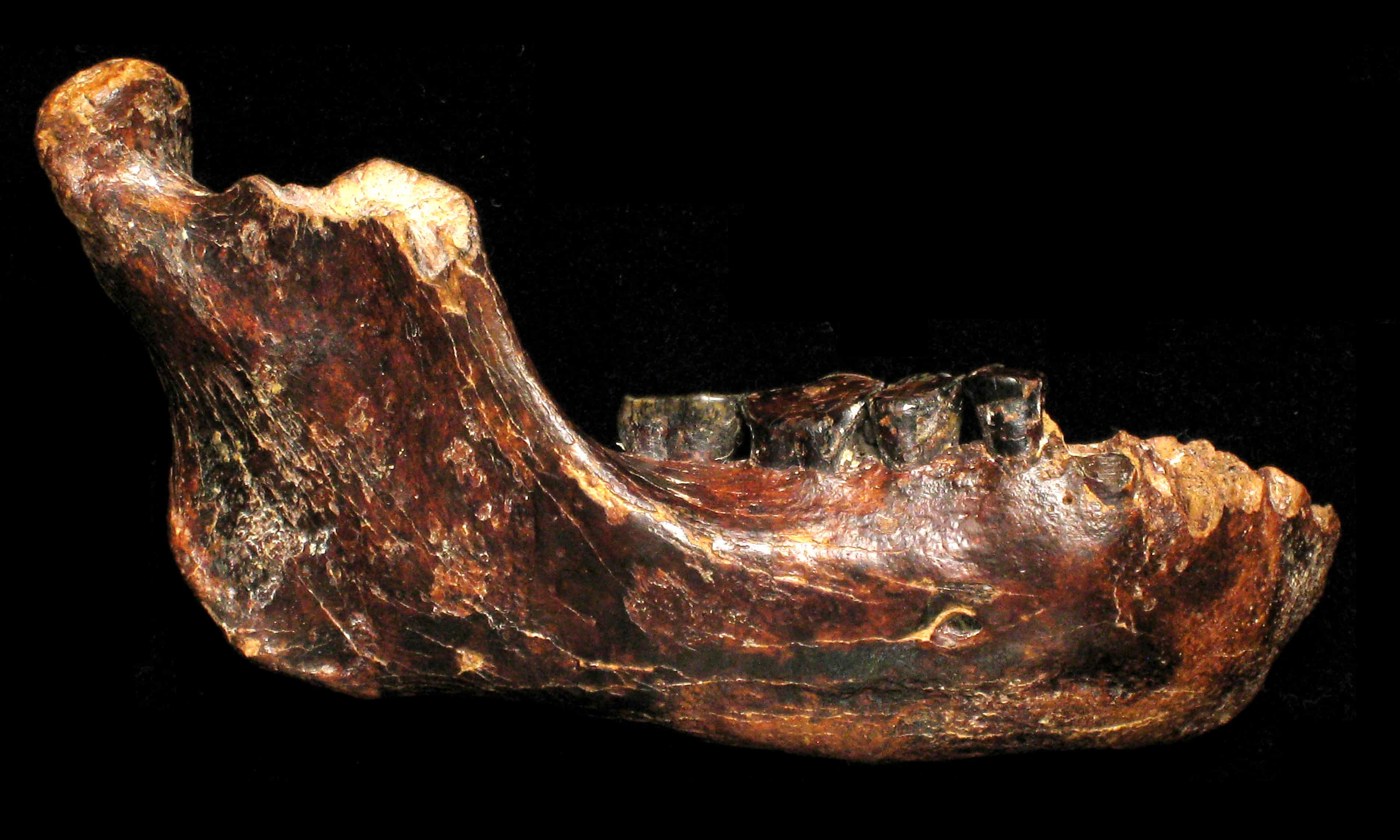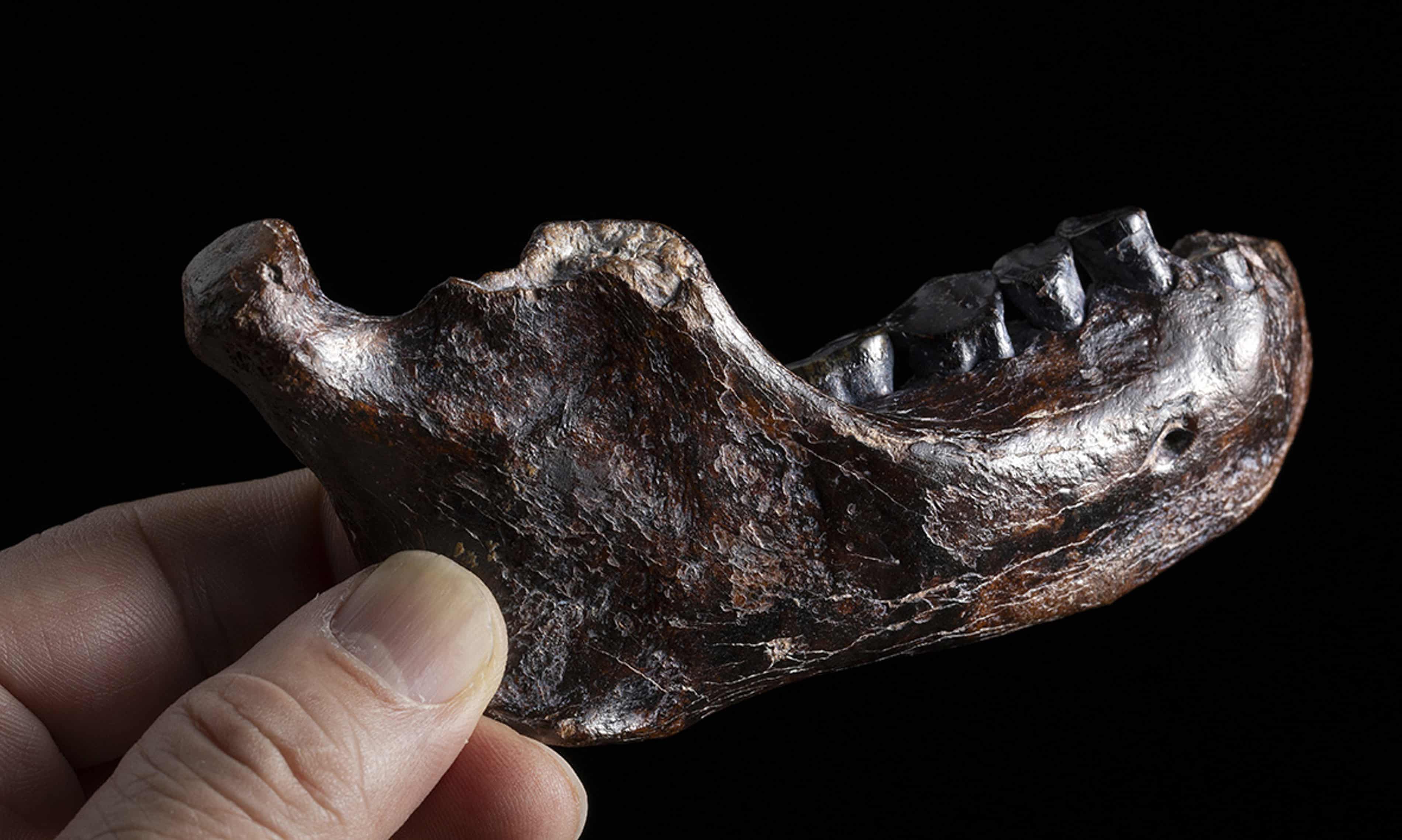 |
| Artist’s reconstruction of a Denisovan male based on fossil evidence. Illustration by Cheng-Han Sun. |
A rare fossil discovery in the Taiwan Strait could rewrite what we know about ancient human species and their migrations across Asia.
A Surprise from the Sea: How the Fossil Was Found
It all started with a fishing trip in the Penghu Channel, off the coast of Taiwan. Amid the usual catch, something unusual came up—a partial lower jawbone, which would later become a major clue in human evolutionary science. Known as Penghu 1, this fossil changed hands from a collector to the National Museum of Natural History in Taiwan. For years, no one could definitively say which ancient human species it belonged to.
 |
| The most complete Denisovan fossil ever genetically identified. Photo credit: Yousuke Kaifu. |
Who Were the Denisovans?
Denisovans are a mysterious group of archaic humans first identified from a finger bone and teeth found in Siberia’s Denisova Cave in 2010. Closely related to Neanderthals, Denisovans are believed to have lived alongside them and early Homo sapiens, interbreeding with both.
But here’s the kicker: Denisovan fossils are extremely rare. Most of what we know comes from a few bones and teeth discovered in Siberia and Tibet. That’s why Penghu 1 is such a game-changer—it suggests Denisovans roamed much further south than previously thought.
Cracking the Code with Proteins
Since the fossil was too old and degraded for DNA analysis, scientists used a cutting-edge method called protein sequencing to extract data from the jawbone. Teams from Taiwan, Japan, and Denmark were able to identify protein patterns similar to those found in confirmed Denisovan specimens from Siberia.
This breakthrough, reported by Associated Press, strengthens the case that Penghu 1 belonged to a Denisovan—marking the first such find in Taiwan.
What This Means for Human History
The discovery expands the known geographic range of Denisovans, suggesting they adapted to a wider range of environments—from the icy caves of Siberia to the temperate waters near Taiwan. This challenges earlier theories and supports the idea that Denisovans were more widespread and genetically diverse than we assumed.
In fact, traces of Denisovan DNA still live on in some populations today, particularly in East and Southeast Asia, proving that these ancient humans left a lasting genetic legacy.
Still More Questions Than Answers
Despite this exciting find, not everyone is ready to close the case. Rick Potts of the Smithsonian’s Human Origins Project praised the protein work but cautioned that more evidence is needed before we can definitively label Penghu 1 as Denisovan.
 |
| Denisovan fossil discovered in the Penghu Channel near Taiwan. Photo credit: Chun-Hsiang Chang. |
Nevertheless, the discovery opens new doors. If one fossil washed up from the sea, who knows how many more lie hidden beneath the surface or deep in caves?
The Bigger Picture: Why It Matters
Understanding who the Denisovans were and how they moved helps us piece together the story of human evolution. This find not only adds to our fossil record—it shows how science continues to evolve, using new tools like proteomics to solve ancient mysteries.
What Do You Think?
Sources:


Post a Comment
0Comments